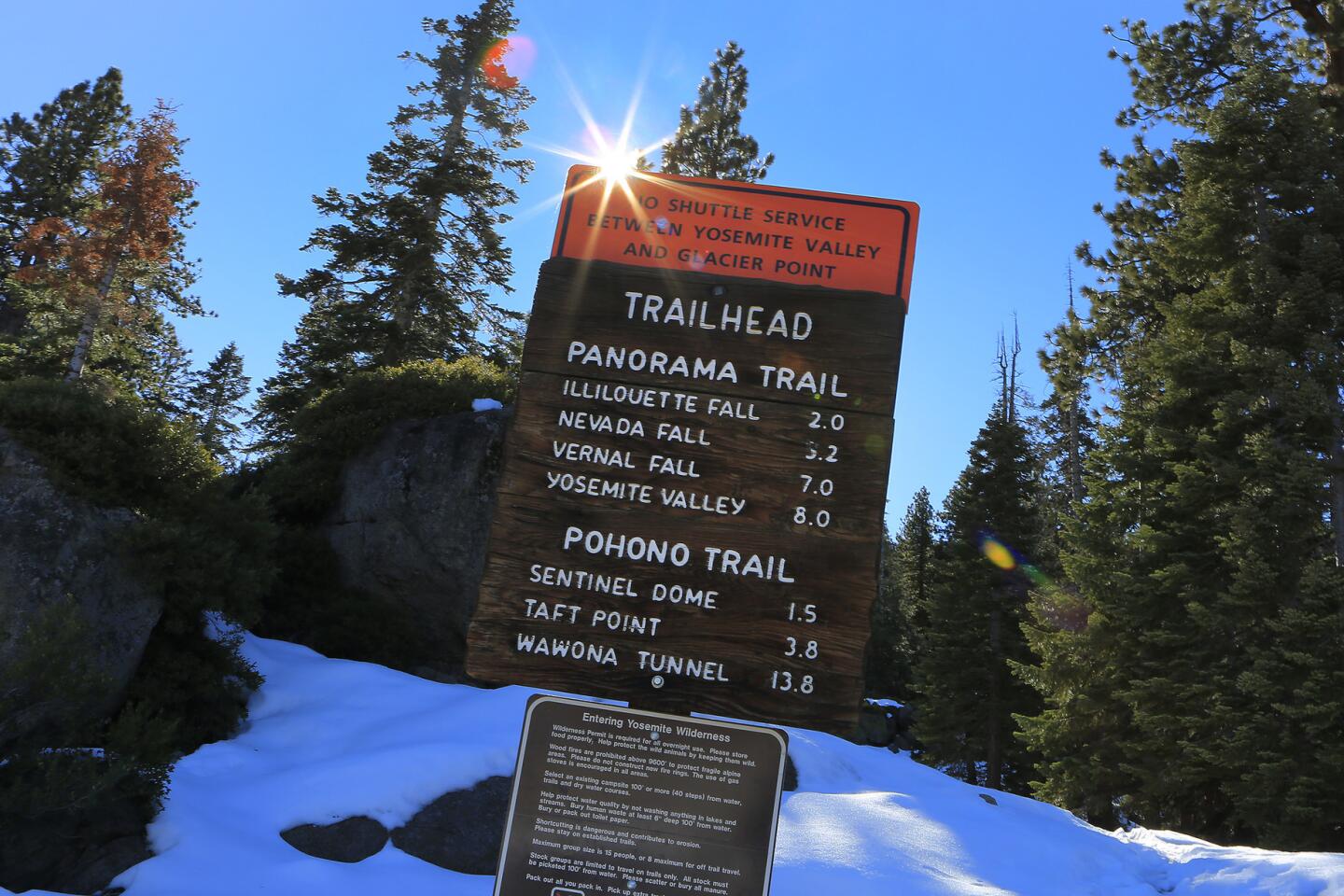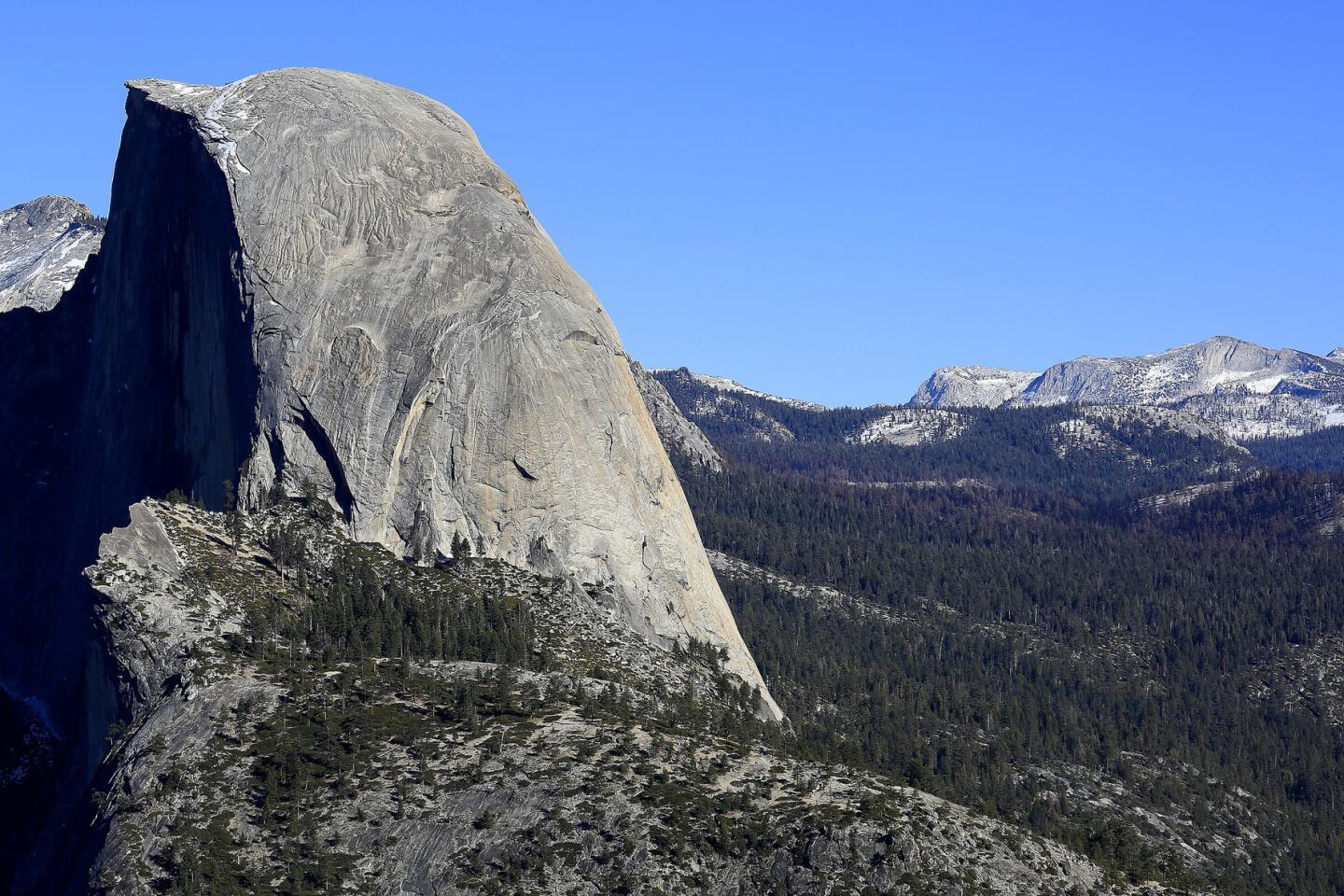Scientists see shrinking California snowpack as a harbinger
- Share via
State workers performed a California winter ritual Thursday, poking hollow aluminum tubes into Sierra Nevada meadows to measure the snowpack. In what scientists see as a harbinger, they didn’t find much.
“We will conceivably see more years like this in the future,” said geologist Jeffrey Mount, a senior fellow at the Public Policy Institute of California.
As the climate warms in coming decades, scientists say, the state’s mountain snowpack could shrink by a third. By the end of the century, more than half of what functions as a huge natural reservoir could disappear.
But that doesn’t mean nature will provide less water to the Golden State: The latest climate models suggest the overall amount of precipitation won’t change much and may even increase across much of California. Rather, more of it will fall as rain and less as snow, altering the timing of important mountain runoff that fills reservoirs and forcing changes in the way the state manages one of the world’s most complex water systems.
On Thursday, the snowpack was a paltry 25% of average for this time of year. A parched January is partly to blame. But the snowpack is also skimpy because warm storms that hit the state in December dumped copious amounts of rain, not snow.
On average, the peak California snowpack holds the equivalent of 15 million acre-feet of water — enough to fill Shasta Lake, the state’s largest reservoir, more than three times. It melts gradually over the course of months, trickling down mountainsides into rivers and swelling reservoirs in the spring and early summer just as the seasonal demand for irrigation and urban deliveries goes up.
Rain, on the other hand, “has to be dealt with immediately. You can’t wait,” said Kelly Redmond, deputy director of the Western Regional Climate Center in Reno.
Dealing with the rain was not a problem in December, when storms powered by giant ribbons of water vapor called atmospheric riversdrenched California with 180% of average precipitation for the month. Three years of severe drought meant that big reservoirs had plenty of room to swallow the surge of runoff. Shasta rose by nearly 60 feet.
But in normal years, reservoirs would be fuller and dam operators might have to release water to maintain space required for flood control.
With climate change, “there could be more water coming off in the winter period than the present system is equipped to handle,” said Dan Cayan, a climate scientist at Scripps Institution of Oceanography. He added that a 1-degree Fahrenheit temperature rise since the 1950s already has cost California and the West 5% to 10% of the spring snowpack.
Adapting to more winter runoff could literally require an act of Congress. Dams are operated according to a fairly rigid set of rules developed for each reservoir by the U.S. Army Corps of Engineers and written into federal law. They are designed to maintain the delicate balance between water supply and flood control — and Congress has to authorize any changes.
Called rule curves, the operating manuals consist of pen-and-ink drawings that show the specific reservoir level that managers are supposed to maintain on a given date. “The trick is, they’ve all been custom-done based on historical hydrology,” state climatologist Mike Anderson said.
The state Department of Water Resources and the U.S. Bureau of Reclamation, the two agencies that operate most of California’s large dams, are in the early stages of studying possible ruleschanges to accommodate shifts in hydrology expected with a warming climate.
As meteorologists get better at predicting big storms, Anderson said, the state also is considering incorporating forecasts into dam operations. If an atmospheric river was headed for the Sierra, for instance, managers could adjust the reservoir levels to make sure they captured the increased runoff.
None of that will be done casually, as climate change will accentuate the inherent tension of dam management. Letting the water out to make room for storm runoff that never comes means lostfuture supplies. Filling up reservoirs in the winter may lead to flooding downstream during spring storms.
“Who wants to be the responsible person for not having that flood space in the reservoir?” asked Iris Stewart-Frey, a Santa Clara University associate professor of environmental studies who has studied shifts in the timing of snowmelt.
Many experts say an obvious solution is to build more storage. “I think if you want to replace 5 million acre-feet of lost snowpack, I don’t see any other way than more storage,” state hydrologist Maury Roos said.
But should California build new surface reservoirs or increase groundwater storage, or both? Who will pay for it?
“I see groundwater becoming incredibly important in the ability to store water from those years that are wet and warm,” Mount said. “When you’ve got it, put it in the ground.”
Arlan Nickel, who is coordinating regional climate change studies for the reclamation bureau, said another possibility would be expanding the network of smaller, high-elevation reservoirs, such as Mammoth Pool.
Others argue for the construction of off-stream surface storage, where water could be parked without worrying about flood control.
The loss of snowpack is “definitely going to be a problem,” said Jay Lund, director of the Center for Watershed Sciences at UC Davis. “But if it’s managed well, it should not be a catastrophe.”
Twitter: @boxall
















